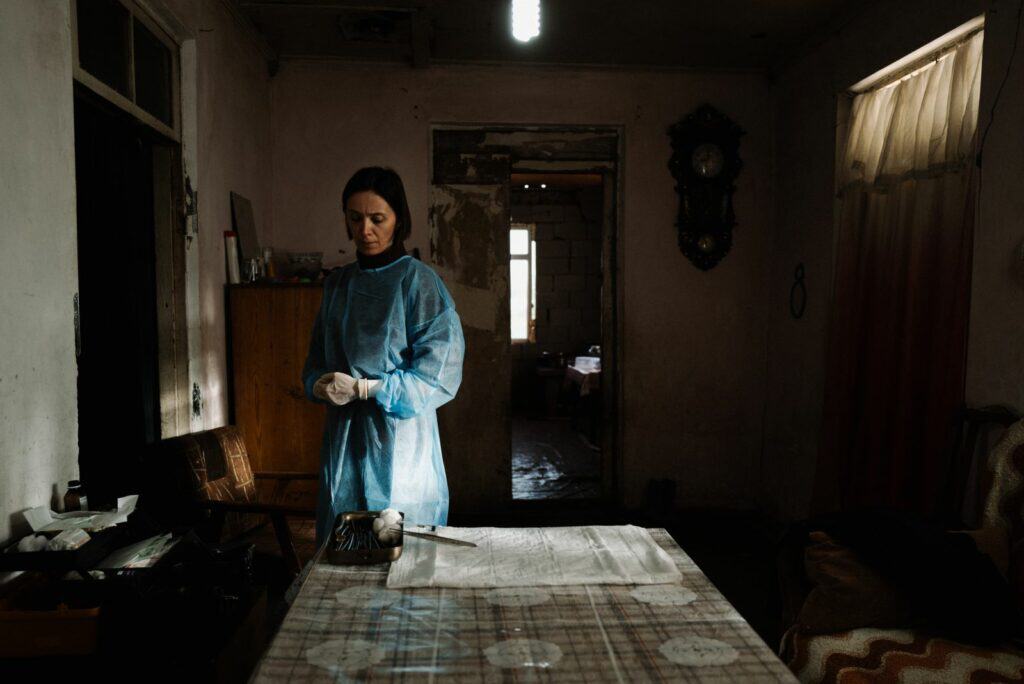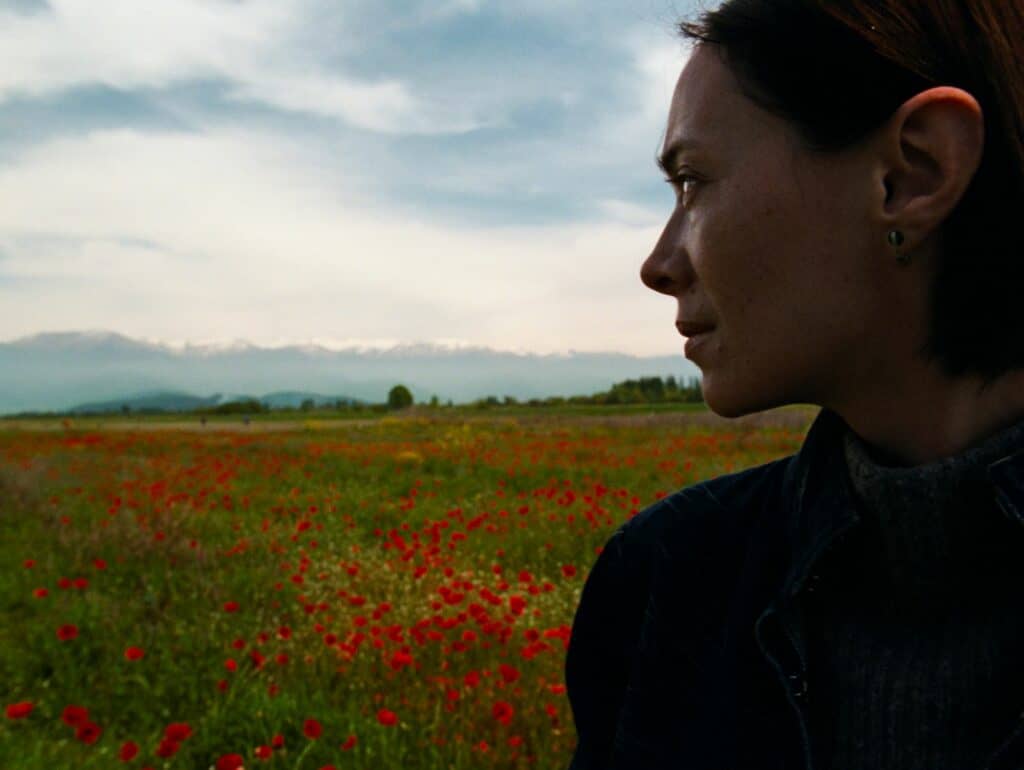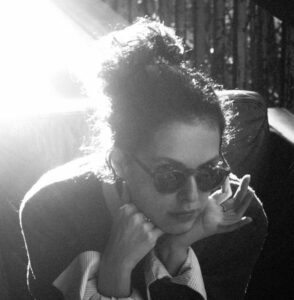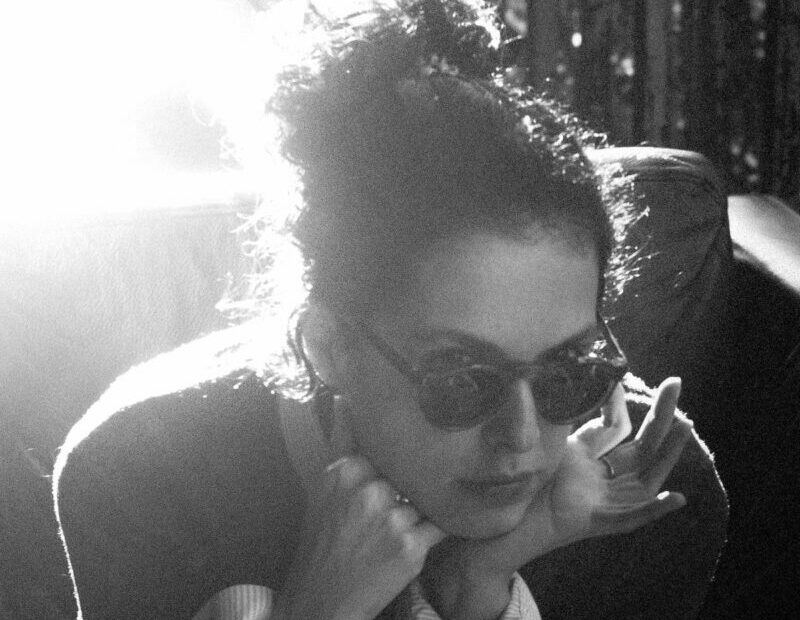April is the sophomore film by Dea Kulumbegashvili, following Beginning (Dasatskisi 2020). Luca Guadagdnino (Queer) was a major fan of that film, as seen in this video, which led him to co-produce the subsequent work. Nina (Iamze, dit Ia) Sukhitashvili) works as an OB-GYN in a small hospital in a provincial town in Georgia. When a newborn dies during delivery, she will be scrutinised. There is not only the fact that the father filed charges with the police, but there are also rumours that Nina performs illegal abortions outside the hospital. She is single and does not have much social life, resulting in her throwing herself into her work, where she is not very popular.
At least from a narrative point of view, April begins with a lengthy, graphic childbirth scene. When the child is stillborn, the inevitable investigation kicks in. The hospital’s head doctor assigns Nina’s colleague, David, to conduct the necessary research. They had some kind of affair years earlier. She meets him and implores him to be fair while handling the case since the job means the world to her. Her leisure time is evidently spent in her car, picking up men who are not always the most decent ones. Like most of the film, those car rides are shot in a supposedly rigorous style, echoing more well-known arthouse directors. Béla Tarr is merely one name that comes to mind.
If the childbirth scene is the starting point of the narrative, it is still preceded by an outdoor sequence with a shot of a shapeless creature, seemingly covered in mud and with vague feminine features, awkwardly moving on a slippery surface. It will not be the last time that we encounter this figure. Who or what is it? Will the course of the film provide any clues? Early on, Nina tells a childhood story of her sister being stuck in the mud, with Nina unable to save her or call for help. Is there a connection there? There will be reasons to get back and explore the mud later and how it relates to the film’s purported style.

Festival programmers nowadays don’t select many arthouse films because the festival heads are afraid to rile up too many people in the increasingly impatient crowd. That is why directors like Pedro Costa, Cristi Puiu, and other significant directors are relegated to smaller or more arty festivals like Locarno. In this year’s Biennale competition, two or three films, at best, could be labelled arthouse films. One of them was my favourite of the entire festival.1Stranger Eyes by Siew Hua Yeo The critics who ignore those films are largely Anglo-Saxons, and in many cases, it is different to understand why those individuals attend press screenings. Here is just one of many prominent examples.
There were several walkouts during the April press screening since this is a film which is too demanding for a 2024 festival crowd. It might be the most ambitious work in the programme, and for some critics, it was the most anticipated film of the week. It is shot in the Academy aspect ratio, and when the screen was narrowed before the screening commenced, several press members burst into applause. The film received rave reviews from the usual suspects, not least those who adored Beginning. Is the space between Scylla Billington and Charybdis Kiang as narrow as April‘s aspect ratio? Is Kulumbegashvili the consummate master that some critics claim, or are they mostly swayed by the subject matter?
Who is the April Fool?
From a formal point of view, it is difficult to shake the feeling that the director’s efforts outweigh the outcome in the attempt at shaping a cohesive form. Beginning had clear derivative tendencies. The burning house with figures carefully placed outside a la Tarkovsky was only one example. In April, the tendency is that Kulumbegashvili strives for true formal mastery in the vein of the aforementioned directors but instead falls in the Mungiu/Reygadas pit. The former comes to mind quite often, not least the Cannes winner 4 Months, 3 Weeks and 2 Days (4 luni, 3 săptămâni și 2 zile 2007), with its simplistic shock effects. The previously mentioned creature could have been obtained at a Mungiu outlet sale.

Many critics will praise the sound design, which is technically proficient but, again, often too obvious, from the wind and heavy breathing to the ticking clocks on the wall. In my review of Love Lies Bleeding, I mentioned that far too many directors are dubbed masters before they are competent craftsmen. In my mind, that is the case with Dea Kulumbegashvili as well. It should be said that April is on a much higher artistic level than Rose Glass’ film.
Arseni Khachaturan’s lensing is technically meticulous but comes off as rigid (Hanekesque?), and you always feel the director trying hard for a formal mastery, which often eludes her. I was often reminded of Valentyn Vasyanovych’s two latest films, not least the nearly perfect Reflection Vidblysk (2021), which is spellbinding from the first frame and where the rigour serves the film’s purpose. Still, when I was ready to pronounce April DOA, something suddenly happened. Nina gets stuck in the mud with her car. It is a bit too obviously tied to the story about her sister, but from there on, the film finds its footing. Granted, there are only 35 minutes left of the running time, but still.
It remains to be seen where Dea Kulumbegashvili’s career will take her. She will never convince the overwhelming majority who merely regard the art of cinema as a storytelling tool, but if she hones her craft, she might create a work that some of us would call a true masterpiece. However, that would require some stylistic changes.
April

Director: Dea Kulumbegashvili
Date Created: 2024-09-04 00:54
2.8
Pros
- The last 30 minutes
Cons
- Too manipulative
- Rife with arthouse clichés

